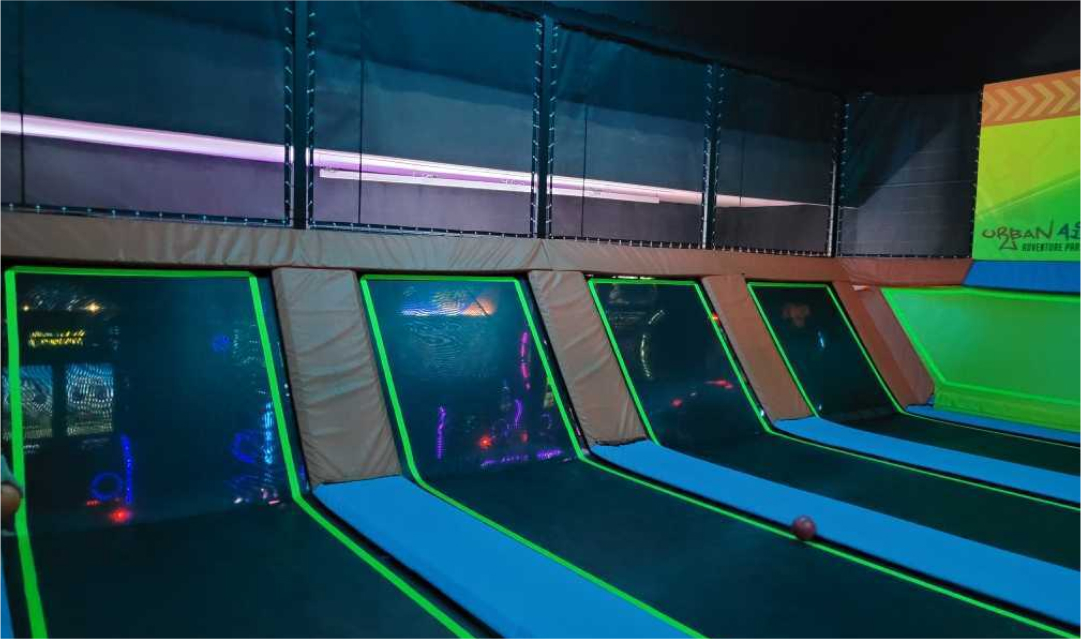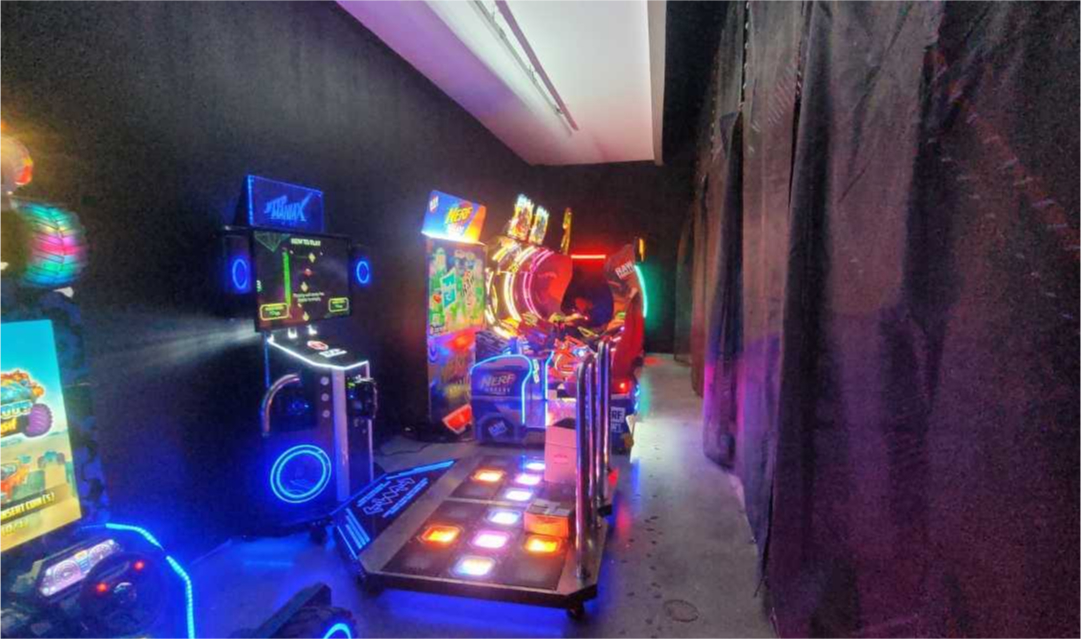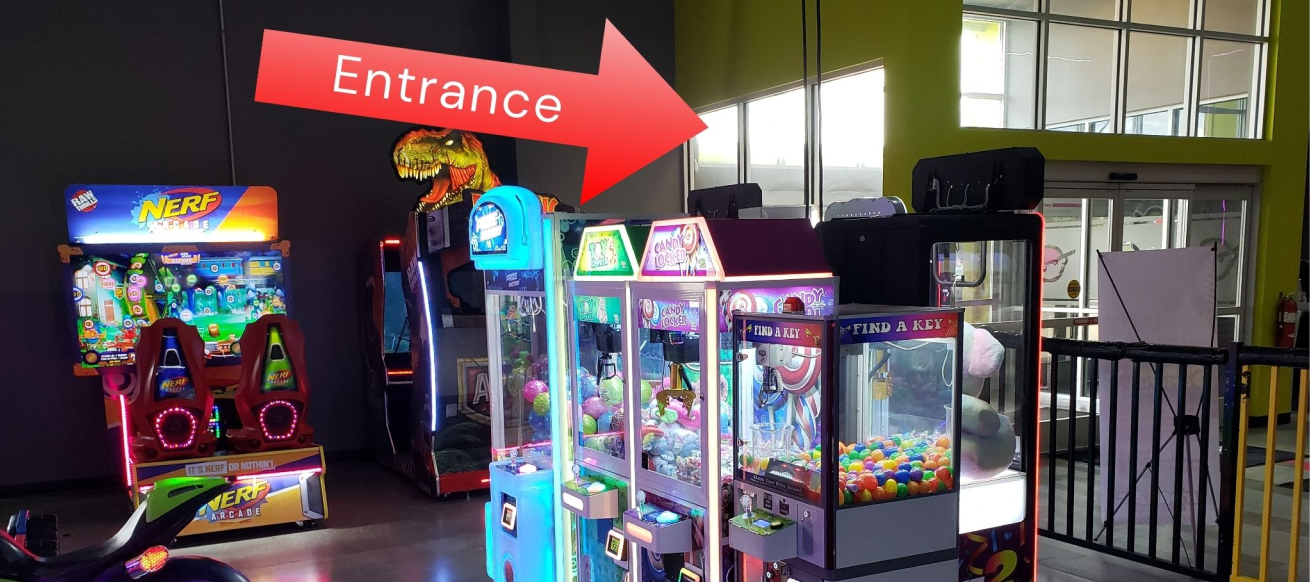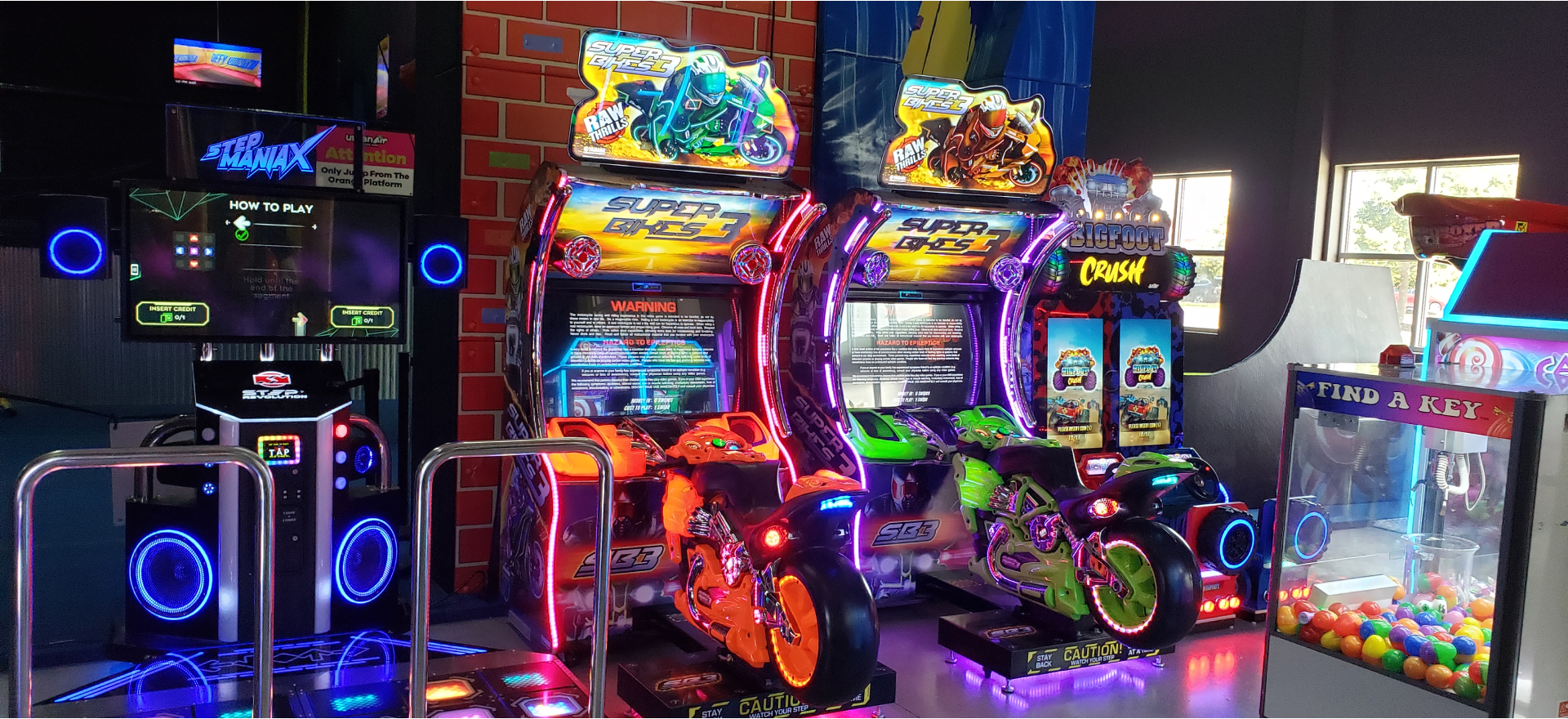- 4min read
Overview
When Amuze stepped in to help a Cincinnati Trampoline Park, the goal was clear: identify the factors negatively affecting game profitability and implement a solution to reverse the trend
This case study demonstrates how strategically relocating games within your venue can significantly impact profitability.
The Problem
In the early stages of working with the park, they decided to move our games to the back of their venue, placing them in a hallway intended to serve as a game room. In most adventure parks, we tend to steer clients away from “game rooms”, but they had a small game set, so we were willing to give it a try. While, at first, the spot didn’t seem like it would negatively impact the profitability of the games, this small placement decision saw all games take a massive hit in popularity and profitability:
- Jurassic Park saw its earnings drop by about 74%.
- Step Maniax’s income went down by nearly 63%.
- Super Bikes and Nerf also felt the pinch, matching the trend of games not doing so hot when they’re out of sight.
This dip clearly indicated that if games aren’t easy to see and/or get to, they’re not going to make much money. And while most venue owners may not initially see the significance of game placement, where you put your games is as important as what games you have and the prizes you stock.


The Solution
When it comes to optimal game placement for the best engagement with visitors and the highest profitability, you need to ask questions like:
- How far away are the games from seating or social areas?
- Are these areas poorly lit or uninviting?
- Are these areas easy to get to?
- Can children safely access them without adult supervision?
But as simple as proper game placement might seem, you’d be surprised how many venue owners lose out on profits because they haven’t fully considered how and where they place their games.
We walked the park with the owner, discussing potential location options within the venue that could significantly enhance game profitability
We decided on a new layout where the games would be arranged in several pods across the front of the park, ensuring they were visible to everyone as soon as they entered, but without making guests feel like the games were in their way.
Confident that the new placements would perform well based on benchmark data from other parks, we also proposed adding eight new games, increasing their lineup to 18.
The Results
Revenue shot up by almost 300% and, on average, each game started making 40% more money than before. Typically, when we add new machines, we expect some cannibalization of ‘average per game revenue,’ but the impact of the new placements was so significant that we observed a net increase.
Just like the location of your venue matters when it comes to attracting the right customers or visitors, the location of your games within your venue matters in terms of their profitability.

Takeaway
The story of how Amuze boosted this park’s game profits by relocating them to better spots offers valuable insights for other venues looking to increase their game revenue. Sometimes it’s not about having newer games or the latest attractions.
Even the best game with the most unique prizes won’t perform well if no one ever plays it. While having interesting prizes and updated games is important, knowing how to place the game for maximum exposure to customers or visitors is equally important.
By partnering with Amuze to rethink their game placement strategy, the Park not only made their games more visible and appealing but also significantly increased earnings.
This case clearly demonstrates that even a small change in game placement can result in significant financial gains.

